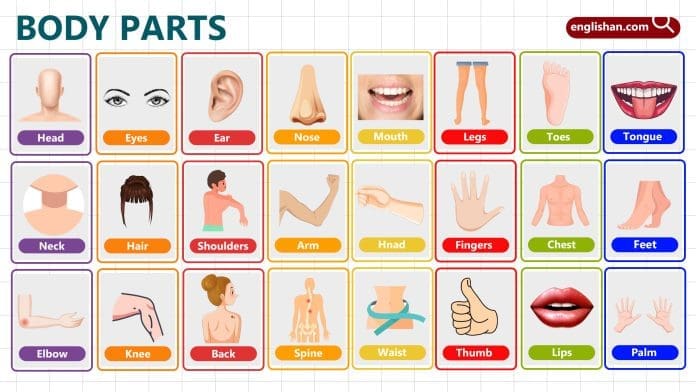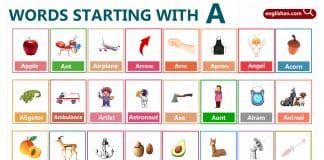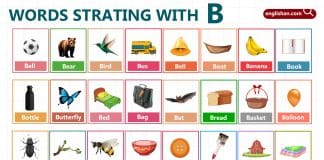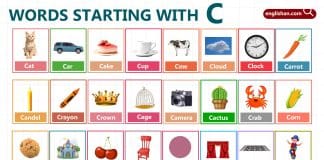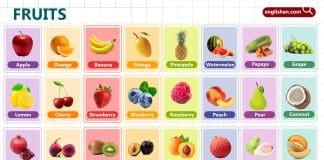Contents
Knowing the parts of the body helps kids describe themselves and understand the world around them. It builds vocabulary, improves communication, and supports learning in daily life. Understanding body parts also helps with health awareness and language development. In this blog post, you will learn the names of different body parts and how they are used in English.
To learn more vocabulary on different topics, visit our Vocabulary Category for helpful lessons and word lists.
Parts of the Body for Kids
Here’s a categorized list of body parts based on their location or function:
1. Head and Face
These parts are located in the head and are responsible for sensing, seeing, hearing, and speaking.
- Head: The top part of the body that houses the brain, eyes, ears, nose, and mouth.
- Eyes: Allow us to see by capturing light and sending signals to the brain.
- Ears: Help us hear sounds and maintain balance.
- Nose: Used for breathing and smelling.
- Mouth: Used for talking, eating, and expressing emotions.
- Teeth: Help break down food into smaller pieces to be swallowed.
- Tongue: Helps with tasting, chewing, and speaking.
- Hair: Grows on the head, protecting the scalp and helping with sensory perception.
2. Upper Body (Torso and Arms)
These body parts are located in the upper body and play a key role in movement and function.
- Neck: Connects the head to the body and allows head movement.
- Shoulders: Connect the arms to the body and allow arm movement.
- Arms: Used for lifting, carrying, and performing tasks.
- Hands: Used to grasp, hold, and feel things.
- Fingers: Located on the hands, help with detailed tasks like picking up small objects or writing.
- Chest: Protects vital organs such as the heart and lungs.
3. Core (Body’s Center and Internal Organs)
These parts are essential for digestion, support, and protection of vital organs.
- Stomach: Breaks down food so the body can absorb nutrients and gain energy.
- Back: Supports the body and protects the spine.
- Spine: A column of bones that supports the body and protects the spinal cord.
- Waist: The part of the body between the chest and hips, allowing movement and flexibility.
4. Lower Body (Legs and Feet)
These parts are responsible for movement, balance, and supporting the body’s weight.
- Legs: Used for walking, running, standing, and jumping.
- Feet: Support the body and help with balance and movement.
- Toes: Located at the end of the feet, help with balance while standing or walking.
- Knee: A joint in the leg that allows it to bend and move.
- Elbow: A joint in the arm that lets it bend and extend.
- Thumb: A special finger that helps with gripping and holding objects firmly.
This categorization is based on location (head, upper body, core, lower body) and function (movement, protection, support, sensory). It helps explain the role of each body part in a way that’s easy for kids to understand.
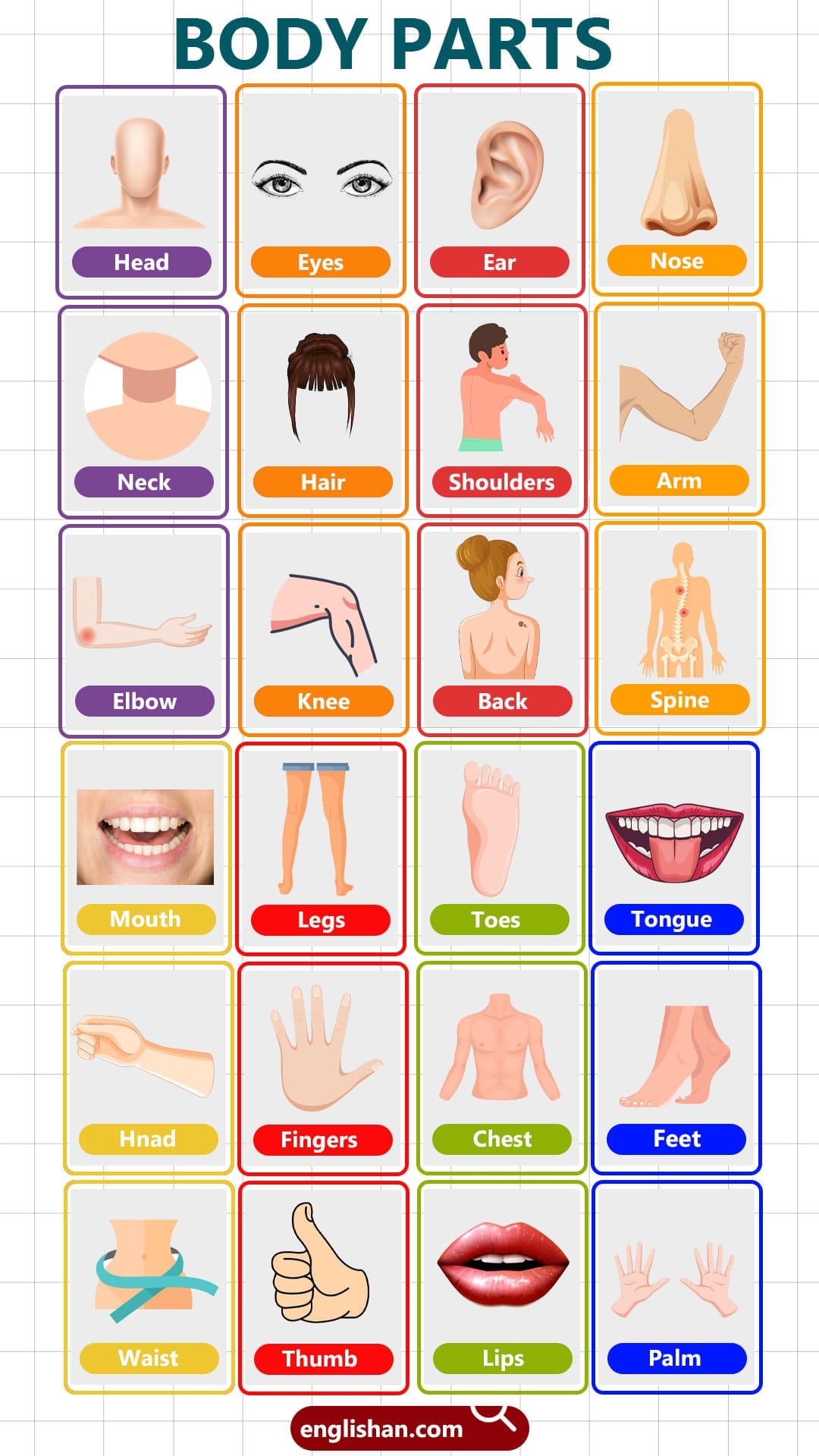
Interesting Facts About Parts of Body
Here are some interesting facts about the parts of the body:
- Eyes blink about 20 times a minute.
- The tongue is the strongest muscle in the body for its size.
- The nose can recognize over a trillion different smells.
- Hair grows about half an inch every month.
- Ears never stop growing as we age.
FAQs
Body parts are the names of different parts of the human body, like head, arms, and legs.
Kids learn body parts by singing songs, pointing to them, and practicing words like eyes, nose, and hands.
Knowing body parts helps kids understand their bodies and talk about them clearly with others.
Here’s a short summary of the parts of the body and their functions:
1. Head: Holds the brain, eyes, ears, nose, and mouth.
2. Eyes: Help us see.
3. Ears: Help us hear and balance.
4. Nose: Helps us breathe and smell.
5. Mouth: Helps us eat and talk.
6. Teeth: Break down food.
7. Tongue: Helps taste and swallow.
8. Neck: Connects the head to the body.
9. Shoulders: Help move the arms.
10. Arms: Help lift and reach.
Conclusion
Knowing the parts of the body helps kids communicate, understand their bodies, and have fun learning. From the head to the toes, every part has a role! Keep practicing these words every day.
You May Also Like
